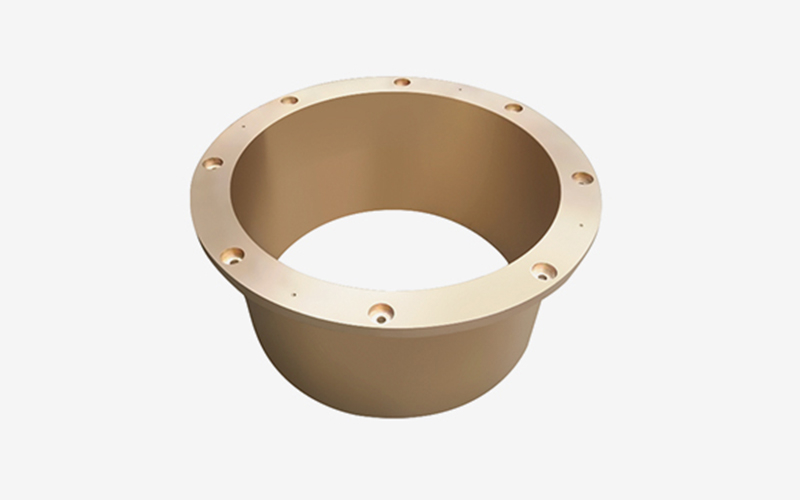Aluminum bronze sleeves (bushings) are highly durable and perform exceptionally well under harsh environmental conditions due to their unique alloy composition (typically Cu-Al with Fe, Ni, or Mn). They are chosen over standard brass or plain bronze bushings when extreme wear resistance, strength, and corrosion resistance are required.
.jpg)
Optimal Environmental Conditions for Aluminum Bronze Sleeves
1. High Load & Pressure Conditions
Best for: Heavy machinery, mining equipment, hydraulic systems.
Why?
High tensile strength (up to 900 MPa in some alloys).
Excellent anti-galling properties, reducing wear under heavy loads.
2. Corrosive & Marine Environments
Best for: Ship propellers, offshore platforms, seawater pumps, desalination plants.
Why?
Superior saltwater corrosion resistance (better than brass or steel).
Resists biofouling (marine growth adhesion).
3. High-Temperature Applications
Best for: Steel mills, foundries, engine components.
Why?
Retains strength up to 400–500°C (750–930°F).
Resists thermal fatigue better than standard bronze.
4. Abrasive & Dirty Conditions
Best for: Earth-moving equipment, slurry pumps, mining conveyors.
Why?
High wear resistance due to hard aluminum oxide layer.
Handles sand, grit, and particulate matter better than softer bushings.
5. Chemical Exposure
Best for: Chemical processing, oil/gas industry, acid pumps.
Why?
Resists sulfuric acid, alkaline solutions, and hydrocarbons better than brass.

When to Avoid Aluminum Bronze?
Low-load, high-speed applications (better suited for oil-impregnated bronze or polymer bushings).
Extreme cryogenic temperatures (can become brittle below -50°C/-58°F).
Cost-sensitive applications (aluminum bronze is more expensive than standard brass/bronze).
.jpg)
